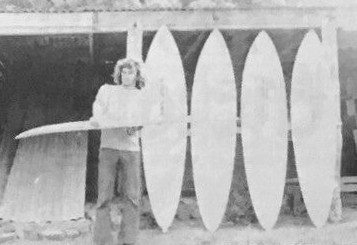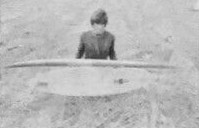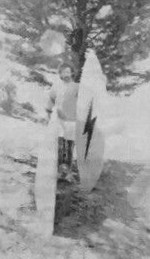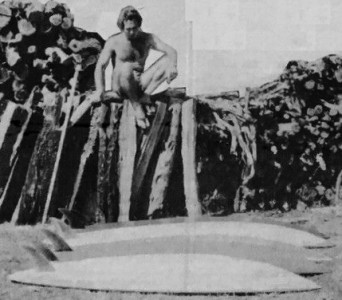
surfresearch.com.au
tracks : victorian design, 1976.
tracks : victorian design, 1976.
|
|
|
|
|
|
 |
surfresearch.com.au
tracks : victorian design, 1976. |
| Wayne Lynch :
Rip Curl Surfboards |
Kym Thompson : Water Cooled Surfboards | Willie Muncey : Soul Creation Surfboards |
Richard Harvey : Klemm-Bell Surfboards |
|
Wayne
Lynch
Rip Curl Surfboards My surfboards are basic all round tail pins with the widest point just ahead of centre with a long feed into the tail. That smooths the water out before it gets under my feet so that all I do is stand there, on top of a very light vee, and to lean back is to stop and to lean forward is to go. That's the basics of it. I want to get it that simple. The rails are pulled under with a hard rail underneath but a soft rail elsewhere. Just about everything I ride is 19*" wide, no matter what length, pretty narrow surfboards. These are all I've ever really cared about. They to for me and they go for a lot of other people too. |
 |
| I rode single
flyers for a while and I took one to Bali
which went really well. When I got back I kind of felt that the more flyers you had the more zap you got out of the board, so I went to double flyers. I've also gone from paper thin foil at the back to a thicker back. Those thin jobs are good in good waves, but the rest of the time they don't work. This board has a flat deck with a bevelled off rail tucked under to a hard edge. It means you've got a soft rail with one hard point where the water will release. |
 |
| 6ft 10" by 19
1/2" with 5 1/4" lift and 3" tail lift. The bottom has a very soft roll around the tail, running into a flat. The rails are low, but tucked under to a soft edge, which I find gives me more release. The fin is the dolphin shape that I've been into for a few years now, but I've taken a lot of area out of the base to loosen the whole tail up. This boards got a lot more curve than most boards but I find I can get anywhere on the face of the wave with it. I can turn virtually anywhere. The smaller board's 6ft 5" by 19 1/2" and pretty much the same thing on a smaller scale. Its got that same natural curve, 5" in the nose and 2 3/4" in the tail. It's got direction and power. Just about all my boards are pintails. |
 |
| You've
recently come down to Victoria to do some
freelance shaping for Klemm-Bell? Yes, that's I basically what it is. I'd like to get a system going where I have a place in each stale where I can go and work. Then when the season is happening there I can get good waves and shape some boards. I'll work here until Easter, go to Sydney and shape for a while, then head up to Queensland, then a couple of months in Bali, then back to Australia again. Are all your own boards pintails? Yes. It's just surfing the line of the board, not forcing it to go anywhere. Because I'm shaping my own boards I can shape the curves I want to ride. My balsa board is a classic board because the curve is constant through out. You've got so much more accuracy because you can aim for a point and know it's going to take you straight there. Where did you get the balsa board? A French guy helped me shape it in France. He'd worked with Diffenderfer and he knew a lot about balsa. I've had it for two years and it still hasn't dated. That's something about a pintail, it doesn't date. |
 |
|
|
|
|
|
|